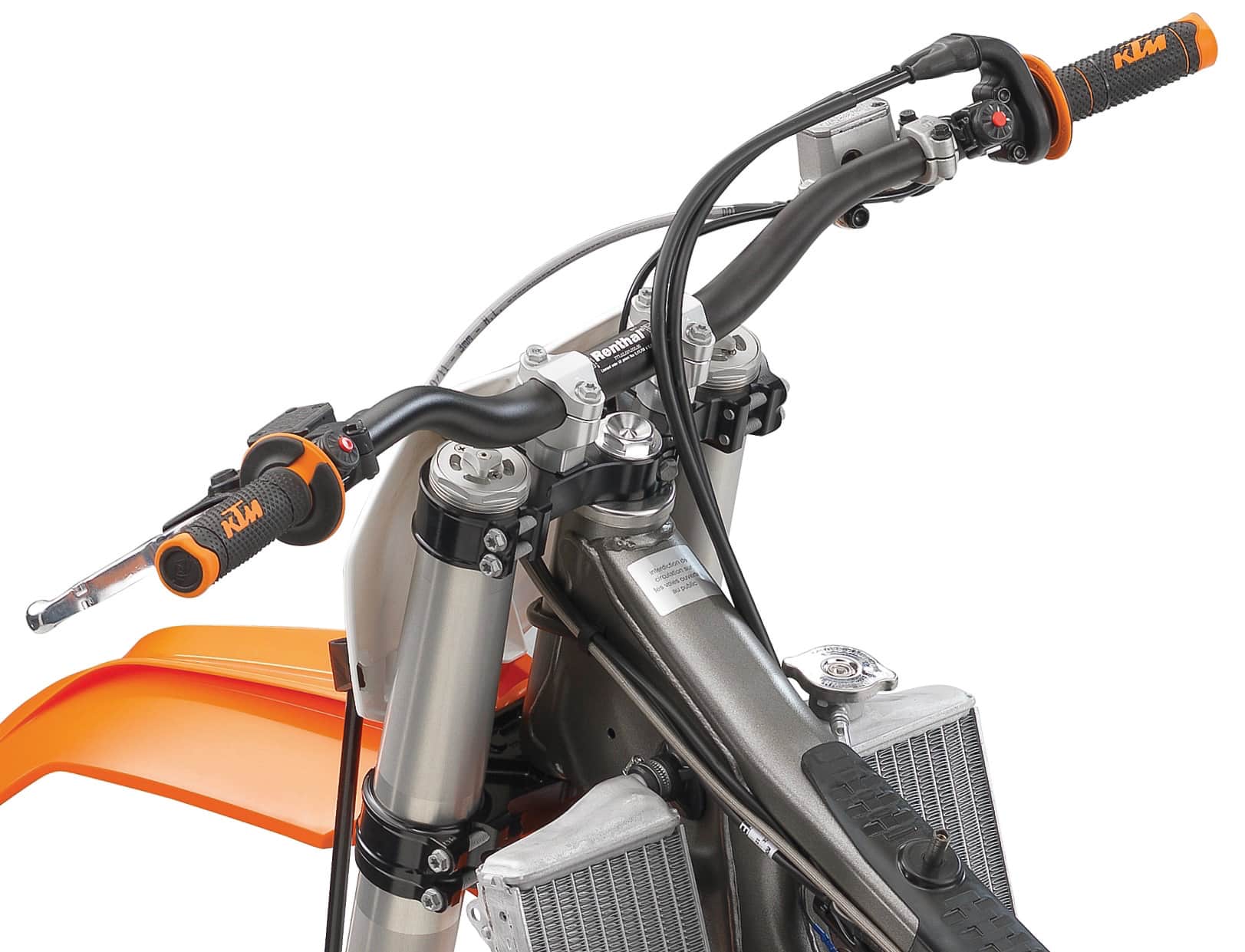ASK THE MXPERTS: IS A CROSS BAR OR NO CROSS BAR SOFTER?

Dear MXperts,
I’ve always wondered which handlebar design is the softest. Is it a handlebar with a crossbar or one without one? Is it a 7/8-inch bar or a 1-1/8-inch bar? I am looking for the most flex possible to cushion my hands in the rough.
Plain and simple, the handlebar with the most flex would be a 7/8-inch handlebar without a crossbar, but thank goodness no manufacturer would make such a handlebar, because 7/8-inch diameter tubing alone isn’t strong enough for a handlebar. This was discovered decades ago when lots of bikes came with steel 7/8-inch handlebars, and there were even some solid aluminum 7/8-inch bars. They were flexy fliers, and the handlebar manufacturers realized that to achieve the necessary strength, a crossbar was needed. Steel bars can employ a welded crossbar, but welding would compromise the strength of an aluminum bar, so its crossbars were clamped on. The crossbar supports the handlebars in the up/down directions but is ineffective in the forward/backward directions. In response, over-size bars were built using a 1-1/8-inch aluminum tube swaged down to 7/8th of an inch at the ends to accept the throttle, lever mounts, kill button and grips.
The science behind the oversize handlebar was that if you take the same material with the same wall thickness and manufacture a larger diameter tube out of it, its strength and stiffness will grow exponentially by the proportional increase in diameter size. What does that mean? It means that if you take the same material used in a 7/8-inch aluminum bar and make a 1-1/8-inch bar, the larger bar will be 2.1 times stiffer and 1.7 times stronger. (Stiffness increases to the third power, strength to the second power of the percentage of diameter increase.)
The best way to increase the strength of a bar is to increase its diameter. As a plus, oversize aluminum handlebars do not need a crossbar to support them, leaving them free to flex without fear of cracking or breaking; however, during the transition period from 7/8-inch bars to 1-1/8-inch oversize bars, a percentage of the racing population asked for a crossbar—and many manufacturers made oversize handlebars with a crossbar—even though the crossbar reduced the bar’s ability to flex. If oversize 1-1/8-inch-diameter handlebars were better than 7/8-inch bars, it was natural to think that an even larger-diameter 1-3/8-inch bar would be better. Science may be on the side of ultra-oversize bars, but they come with an added cost—not just for the expensive bars themselves, but because they require equally expensive ultra-oversize bar mounts.
The answer to your question is that the typical oversize 1-1/8-inch handlebar, without a crossbar, is the design with the most flex. If you insist on having a crossbar, search out over-size bars with crossbars that incorporate some movement via elastomer bumpers.





Comments are closed.